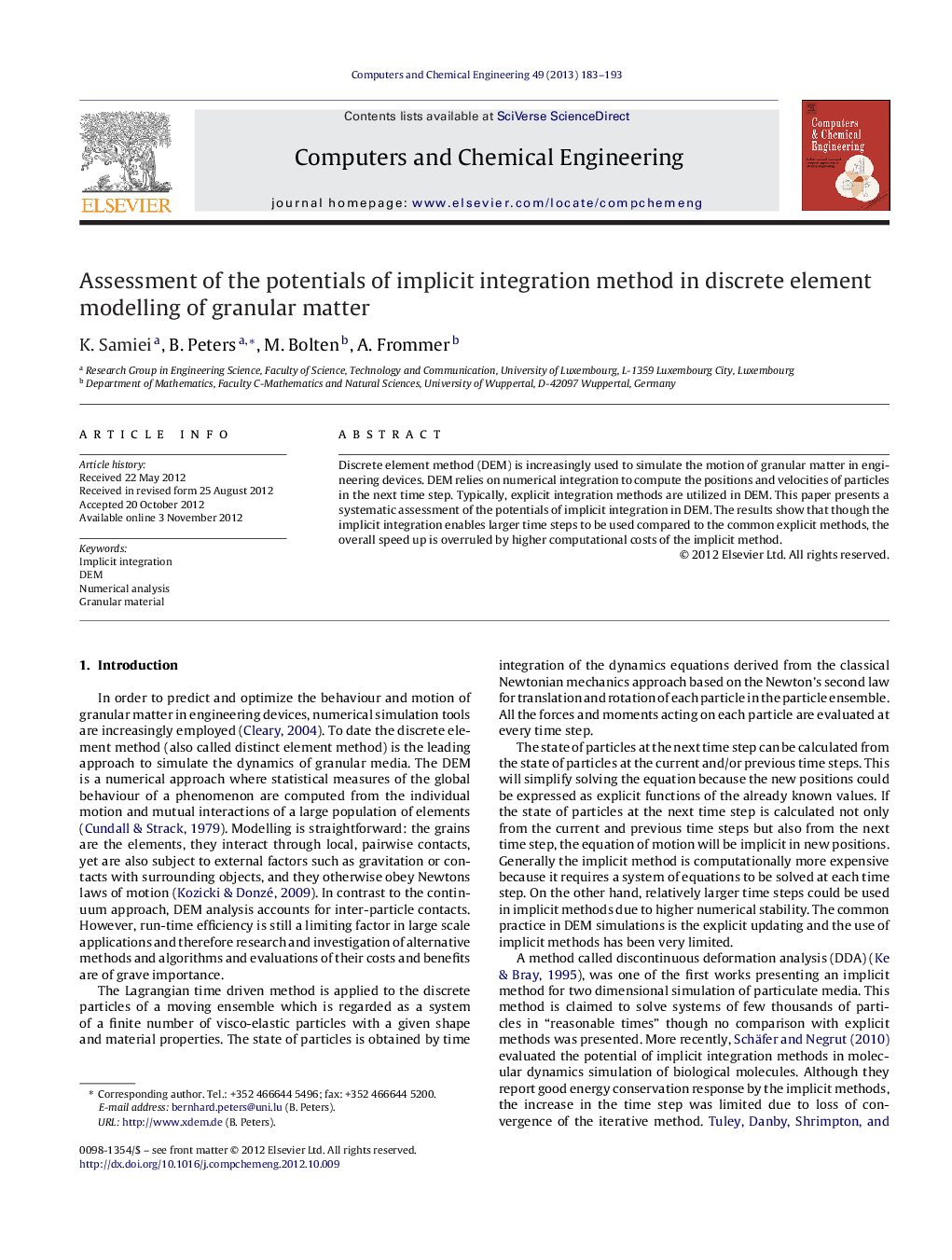| Article ID | Journal | Published Year | Pages | File Type |
|---|---|---|---|---|
| 172731 | Computers & Chemical Engineering | 2013 | 11 Pages |
Discrete element method (DEM) is increasingly used to simulate the motion of granular matter in engineering devices. DEM relies on numerical integration to compute the positions and velocities of particles in the next time step. Typically, explicit integration methods are utilized in DEM. This paper presents a systematic assessment of the potentials of implicit integration in DEM. The results show that though the implicit integration enables larger time steps to be used compared to the common explicit methods, the overall speed up is overruled by higher computational costs of the implicit method.
► Implicit integration allows larger time steps to be used than explicit methods. ► Implicit integration requires solving equations iteratively at each time step. ► Detection of contacts is more robust in implicit integration. ► The benefits of implicit method is only recognizable at big time steps. ► Implicit methods are computationally too expensive for the benefits they offer.
